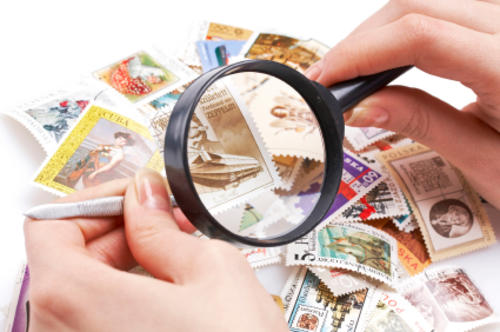The Intricate Art of Stamp Valuation
Whether you have just inherited a stamp collection or you have been collecting stamps all your life, selling your stamps at the right price is usually the most difficult part of stamp collecting even for the most experienced sellers. Several important factors need to be considered, from the condition of the stamp to the current supply and demand.
Who Can Tell Me the Value of My Stamps?
1. Catalogues
Ever since the first stamp in 1840, all stamps issued around the world have been published in stamp catalogues. Consulting a stamp catalogue is the easiest way to find out the price and history of a stamp. They are considered an essential tool in stamp collecting.
2. Professional Appraisals
Having a stamp professionally appraised is the best way to determine the book value of a stamp. There are a few appraisers in South Africa and their services can be costly. Hence, a professional appraisal is usually only done for rare, valuable stamps and for insurance purposes.
3. Online Research
The book value is often higher than the market value thus, it is important to determine how much you can actually sell your stamps for. Get comparative prices by browsing bobshop. Look for the samples that are as close as possible to what you have. Even the slightest disparity can mean a dramatic difference in price. Stamp auctions from a low opening bid are the most reliable way to find out the rarity and value of a stamp. However, they are not for the faint-hearted, so you may prefer to first seek advice from stamp collectors and dealers.
4. Stamp Shows
Consulting knowledgeable stamp enthusiasts could be extremely helpful in finding the value of your stamps. Follow the news from the Philatelic Federation of South Africa to find out about the next stamp show or to find a stamp club near you.
How Do They Know?
1. Condition
A stamp's condition is labelled as defective, faulty or sound. Sound means the stamp has no defects or faults. A defect is a major imperfection such as mission perforations. A faulty stamp is one with minor imperfections such as a corner crease.
2. Supply
Rarity can be assessed simply by looking at a stamp's availability in the market. Usually, the stamps most sought after are those with a small number of copies and those that have errors that escaped the quality-control inspection.
Stamps are then graded according to the degree of cancellation marks and the centering of the stamp design between perforations. This is graded as Superb (S), Extra Fine (XF), Very Find (VF), Fine-Very Find (F-VF), Fine (F) or Average (A). Imperforate stamps are graded on margin balance and width.
3. Demand
Even if a stamp is rare and in good condition it may not be sought after by stamp collectors. If a stamp is connected to a major historical event, the stamp can be in greater demand at a given time. Sometimes stamps are in demand because there is a general agreement on how prized a stamp is.
What Affects the Condition, Supply and Demand?
1. Age
The value of a stamp will greatly increase if the stamp has an interesting and traceable history. The year the stamp was issued is often a part of the stamp design. Alternatively, the age of a stamp can be determined by identifying the material, design and purpose.
2. Place of Issue
Determining where the stamp was issued is important in determining its value. If the stamp's country of origin was historically prominent, especially during a specific era, it can hold a greater value due to its significance. The country of origin is usually displayed on the stamp, usually in Latin.
3. Cancellation Marks
Cancellation marks are used to indicate that the stamp has already been used. Stamp collectors classify the cancellation marks as lightly cancelled, moderately cancelled or heavily cancelled. Stamps with prominent cancellation marks are deemed less valuable, especially if the marks interfere with the stamp design. Light or no cancellation marks are preferable.
4. Design Positioning
A stamps condition is also determined by how well it is centered. This can be more accurately studied if the stamp is help upside down. This is called eyeballing.
5. Perforations
Stamps printed in sheets have circular holes punched at the edges of the stamps to facilitate their separation from the surrounding stamps. These are called perforations and are often measured using a perforation gauge. It is important to note that perforations should be crisply and cleanly cut in order to preserve the stamp's value.
6. Gum
The stamp gum is the glue found on the back of stamps that helps the stamp stick to the envelope or postcard. The glue material and condition may help a stamp gain a higher price. Stamp collectors are more willing to pay a higher price for stamps with mint gum. A stamp with gum that is evenly spread and has no gum skips or heavy gum creases is worth more. It is important to also note that stamps placed in an album using hinges have damaged gum and thus are worth less.
Now that you know how to price your stamps, there is no reason to procrastinate. So go on, sell your stamps on bobshop!

